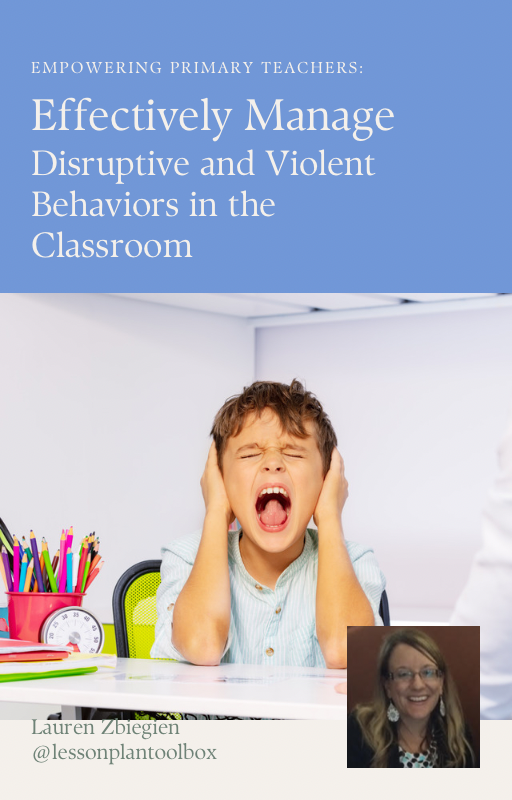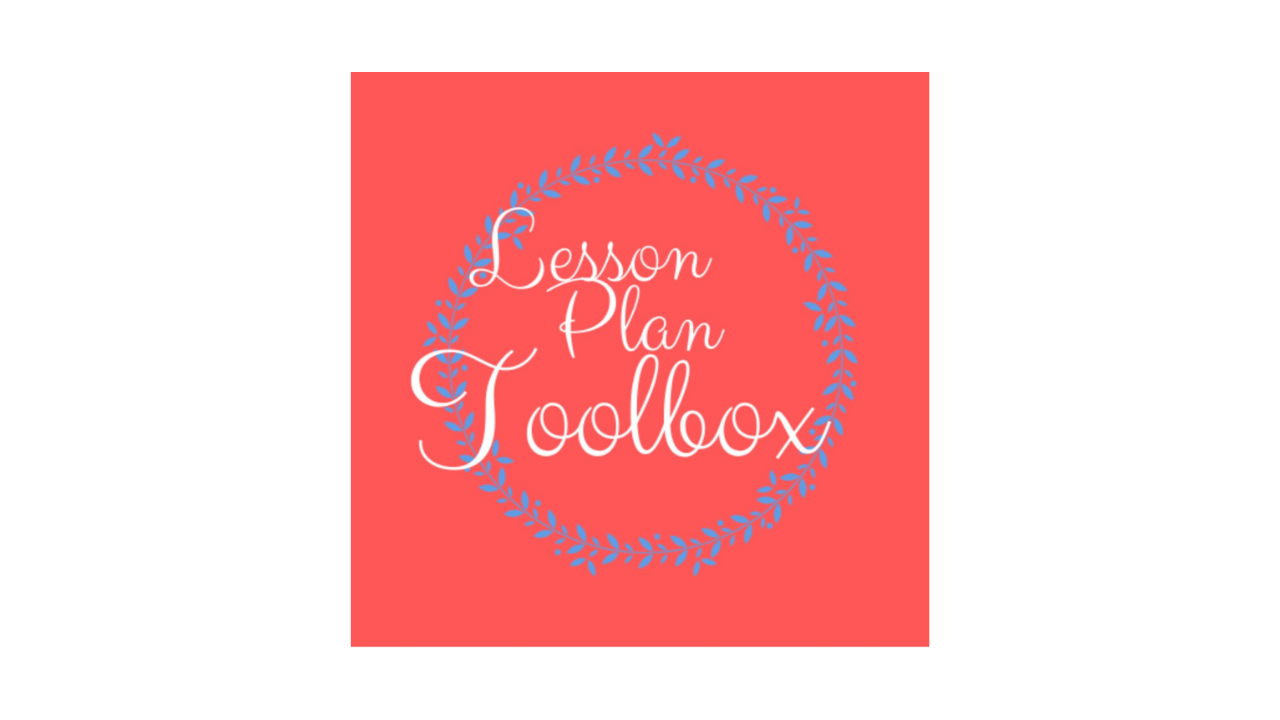
Diffusing Extreme Behaviors in the Classroom

Click here to watch the YOUTUBE version of this post.
Welcome to our yearlong series on Classroom Management by Design for Primary Teachers. Each week we will give you a new piece to the classroom management puzzle to have in place when you need it this school year. Think of it as a Lego kit just waiting to be built.
Classroom Management by Design for Primary Teachers - Week 12:
Mastering Classroom Management: Diffusing Extreme Behaviors in the Primary Classroom

Returning to the classroom after summer break can be a challenging transition for both students and teachers. When faced with extreme behaviors such as hitting, cussing, defiance, or those dramatic outbursts like breaking supplies or throwing themselves on the floor, traditional methods might not be effective. For these situations, you need to dive deeper into strategies that address the underlying causes and provide immediate, practical solutions.
And I know this to be true because I've been there: hit, kicked, bit, punched...if you know, you know.
Your safety and the safety of others in the classroom are CRITICAL in this process. If you do not feel safe or feel as though someone may be harmed, then get HELP right away! -Yes, I've been there too! In fact, I left a position because my safety was in jeopardy.
Finally, before we dive into the 5 strategies, please remember to DOCUMENT everything! DOCUMENT! DOCUMENT! DOCUMENT! The free ebook at the end of this post has plenty of resources to help you document.
Let's take a look at 5 strategies and see which ones feel right for you, but always keep in mind:
SAFETY FIRST!
1. The "Emotion Detective" Approach 🔍
Children often exhibit extreme behaviors because they’re overwhelmed by emotions they don’t know how to express. Instead of immediately reacting to the behavior, become an "Emotion Detective." This involves a calm, investigative approach where you gently ask questions to help the child articulate what they’re feeling.
Strategy:
-Immediate Intervention: When a student acts out, quietly pull them aside and say, "I can see you're feeling really upset. Can you help me understand what’s going on?" Use simple language and offer choices to make it easier for them to express themselves.
- Long-Term: Create a class culture of emotional intelligence by having daily "Emotion Check-Ins," where students can share how they feel using emojis or colors. Over time, this normalizes talking about feelings before they turn into extreme behaviors. Here's a link to 5 Quick Emotion Check-Ins Reel: Watch Here
Why it works: It shifts the focus from the behavior to the emotion behind it, reducing the child's need to act out in order to be heard.

2. The "Reset Space" with Sensory Integration 🌀
For students who throw themselves on the floor, refuse to get up, or engage in destructive behaviors, a "Reset Space" can be a game-changer. This isn’t a timeout but a designated area filled with sensory tools that help them self-regulate.
Strategy:
- Immediate Intervention: Guide the student to the Reset Space and allow them to choose a sensory tool, such as a weighted blanket, fidget toy, or noise-canceling headphones. Give them space but monitor from a distance. Once they've calmed down, gently engage them in a conversation about what happened.
- Long-Term: Introduce the Reset Space to the entire class from day one. Teach them that it’s a place to go when they need to cool down, not just when they’re in trouble. Regularly update the space with new tools and allow students to contribute ideas for what should be included.
Why it works: Sensory tools help children reconnect with their bodies, calming the nervous system, which reduces the frequency and intensity of outbursts.

3. "Behavior Stories" as a Preemptive Tool 📖
Often, extreme behaviors come from a lack of understanding of what’s expected. Behavior stories are personalized narratives that outline expected behaviors in specific scenarios, helping students anticipate and prepare for them.
Strategy:
- Immediate Intervention: If a student is frequently defiant or refuses to participate, create a behavior story that includes them as the protagonist. For example, "Sammy Learns How to Ask for Help" could illustrate how the student can handle difficult situations without acting out.
- Long-Term: Use behavior stories proactively. Before high-stress events, like transitions or group work, read these stories to the class and discuss them. Invite students to create their own stories, giving them ownership over their behavior.
Why it works: Personalizing the expected behaviors in a story format makes it relatable and memorable for young students, reducing the likelihood of extreme reactions.
4. The "Problem-Solving Partners" System 👥
Extreme behaviors like hitting or cussing often stem from a feeling of powerlessness. The "Problem-Solving Partners" system empowers students to take control of their actions by pairing them with a peer or teacher to collaboratively solve problems.
Strategy:
- Immediate Intervention: When a student hits or uses inappropriate language, pair them with a Problem-Solving Partner (another student or adult) and guide them through a structured conversation. Start with, "What happened?" followed by, "What could we do differently next time?" Encourage both participants to contribute ideas.
- Long-Term: Rotate Problem-Solving Partners weekly, so students become comfortable working with different peers. Over time, this builds a classroom community that actively supports positive behavior.
Why it works: Collaborative problem-solving teaches children that they have the power to make better choices and gives them the tools to do so.

5. The "Silent Signal" Strategy 🛑
For students who repeatedly engage in defiance or refuse to get up, having a non-verbal cue can be a powerful tool. A "Silent Signal" strategy allows you to communicate with the student without escalating the situation.
Strategy:
- Immediate Intervention: Establish a non-verbal signal with the student, such as a simple hand gesture or holding up a specific object. When the student begins to act out, use the signal as a reminder to redirect their behavior. Follow this with a quiet conversation, reinforcing the expectation.
- Long-Term: Teach the entire class the Silent Signal system as a way to maintain classroom order with minimal disruption. Make it a part of daily routines, so it becomes second nature.
Why it works: Non-verbal cues reduce the likelihood of confrontation and give students a moment to self-correct without feeling embarrassed or defensive.

Conclusion:
By diving deeper into these strategies, you can transform your classroom into a space where extreme behaviors are managed with empathy and creativity. Traditional methods may not work with every student, but by understanding the root causes of their actions and implementing these innovative approaches, you can create a more peaceful, productive learning environment for all.
SHOCK-TOBER Fall Classroom Management Success Challenge Coming Soon...
Want to join the wait list? Challenge
DID YOU KNOW…
Did you know I organize a FREE Facebook Group for Mastering Classroom Management? We are gearing up for our school year quarter sessions, so if you’re looking for a simple way to improve your classroom management join the already 200+ teachers that have signed up: Mastering Classroom Management Facebook Group
Your ebook GIFT: Empowering Primary Teachers: Effectively Manage Disruptive and Violent Behaviors in the Classroom

FINALLY…
If you enjoyed the tips in this post, you might also enjoy this series of videos Classroom Management by Design for Primary Teachers:
Avoiding Common Classroom Management Mistakes
Vision and Values for Your Classroom
Don’t forget to follow us over on Instagram!
Teach~Relax~Repeat
Lauren

